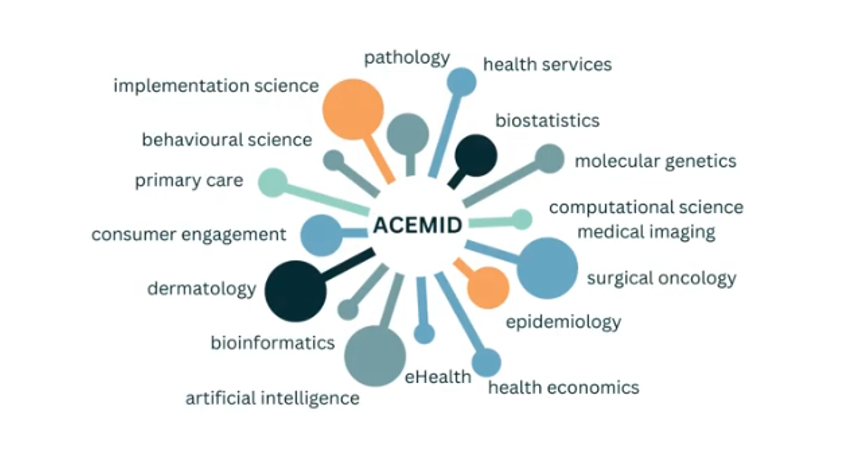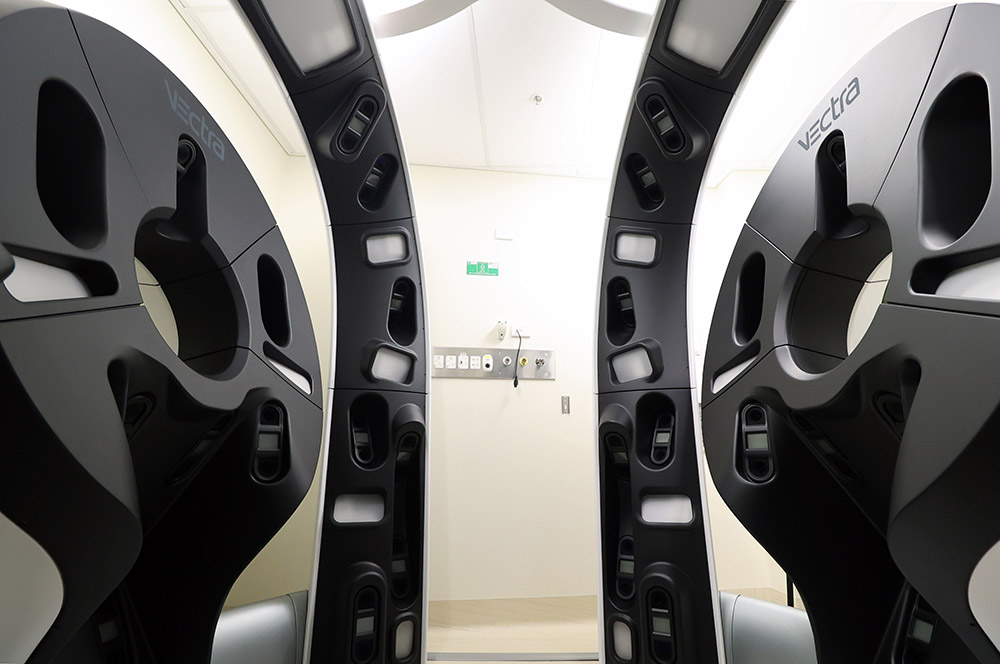“You walk in, and in less than a second, your total body is imaged – this will allow us to really detect a potential melanoma much, much earlier,” Professor H. Peter Soyer says.
Prof Soyer leads the team for the Australian Cancer Research Foundation’s (ACRF) pioneering melanoma project: Australian Centre of Excellence in Melanoma Imaging and Diagnosis (ACEMID).
Their goal is “a world without melanoma”.
It’s no mean feat, because Australia has an inauspicious global lead – in 2022, Australians had the highest overall rate of skin cancer. More than 18,000 people are diagnosed with melanoma each year.
Apart from obvious benefits to patients, reducing the number of stage 3 or 4 melanomas could save the country $162 million a year.
Multidisciplinary team drives success – and recognition
“In science, you’re only successful if you collaborate – absolutely!” Prof Soyer exclaims.
The ACRF ACEMID project, led by The University of Queensland in collaboration with Monash University and The University of Sydney, brings together numerous partners including Melanoma Institute Australia, 15 hospital and health service sites, very active consumer groups, imaging data analysts, GPs, and many more people across both metro and regional areas.
“We have a huge team capability – it’s a really big group of professionals,” says Prof Soyer, “and that’s why we were put into the interdisciplinary category.”
Prof Soyer is referring to the recent announcement that the team is a 2024 Eureka Prize winner – in the category of ‘Excellence in Interdisciplinary Scientific Research’, sponsored by the Aspire Scholarship.

1 second, 92 cameras, 3D model
ACRF ACEMID wants to transform the early diagnosis of melanoma, and improve early diagnosis pathways – particularly in regional and rural areas.
“The system looks a little bit like a spaceship – you walk into it, the 92 cameras shoot within a second, then an avatar [3D model] of your body is built, with all the moles and size of your moles,” says Prof Soyer.
“We can zoom in and have a very great view of all your moles and all your blemishes and all your skin lesions.”

Some people have up to 9000 skin spots, he says. Finding new moles and detecting changes in any of those current moles is absolutely essential to detect melanoma early – and to reassure people (and their doctors) if their moles are not changing.
Comprehensive melanoma surveillance photography is the best way forward, especially for people at high risk of melanoma. The avatar data is used and analysed alongside clinical data, pathology data, proteomics data, genetic data, and more.
This is why the team is currently in the middle of the largest ever Australian cohort study for melanoma – 15,000 people will participate at 15 sites on the eastern seaboard.
From these results, ACRF ACEMID can find out how this 3D total-body photography can help doctors improve or speed up the diagnosis of melanoma.
ACRF ACEMID requires significant data expertise, encompassing world best practice for annotating, cleaning, securing and storing data, to enable their programs to analyse the skin images and other associated data collected for the ACEMID cohort study.
Prof Soyer says ACRF ACEMID is working with all health-related NCRIS partners on this, and that the National Imaging Facility is a key lead partner because “ACEMID has imaging devices and images, which fits beautifully, and NIF is very experienced with data-focused research expertise and resources”.
Project is a paradigm shift for dermatology, and regions
“I think it’s certainly fair to say that our group is leading the world in this kind of interdisciplinary melanoma research,” Prof Soyer says.
“We want to introduce a paradigm shift in how melanoma and skin cancer is diagnosed in Australia – not just for melanoma and skin cancer, but for dermatology in general – because it works beautifully! The image quality is sensational.”

The team cites several factors why the method could revolutionise melanoma screening and especially empower regional people:
- There are already 15 machines established across both metro and regional areas on the Eastern seaboard, with hopefully more to come.
- A skin-imaging technician could conduct the 3D total-body scans in future – taking pressure off a stretched medical workforce.
- Standalone clinics could take up the scanning, reducing pressure on hospital imaging departments.
- Managing scan results can be supported by AI, with diagnosis done by experts wherever they work.
“For chronic conditions, like tumours or rashes, this is basically the vision of ‘where to next’,” Prof Soyer says.
The project informs how Australia can develop a national, targeted melanoma screening program, and ensure equitable access to melanoma early diagnosis.
National Imaging Facility supports ACRF ACEMID through NIF’s data infrastructure program, alongside NCRIS colleagues, Bioplatforms Australia, Population Health Research Network, Phenomics Australia and Australian Research Data Commons (ARDC). The Australian Cancer Research Foundation provided the infrastructure funding for the 15 3D total-body imaging systems.